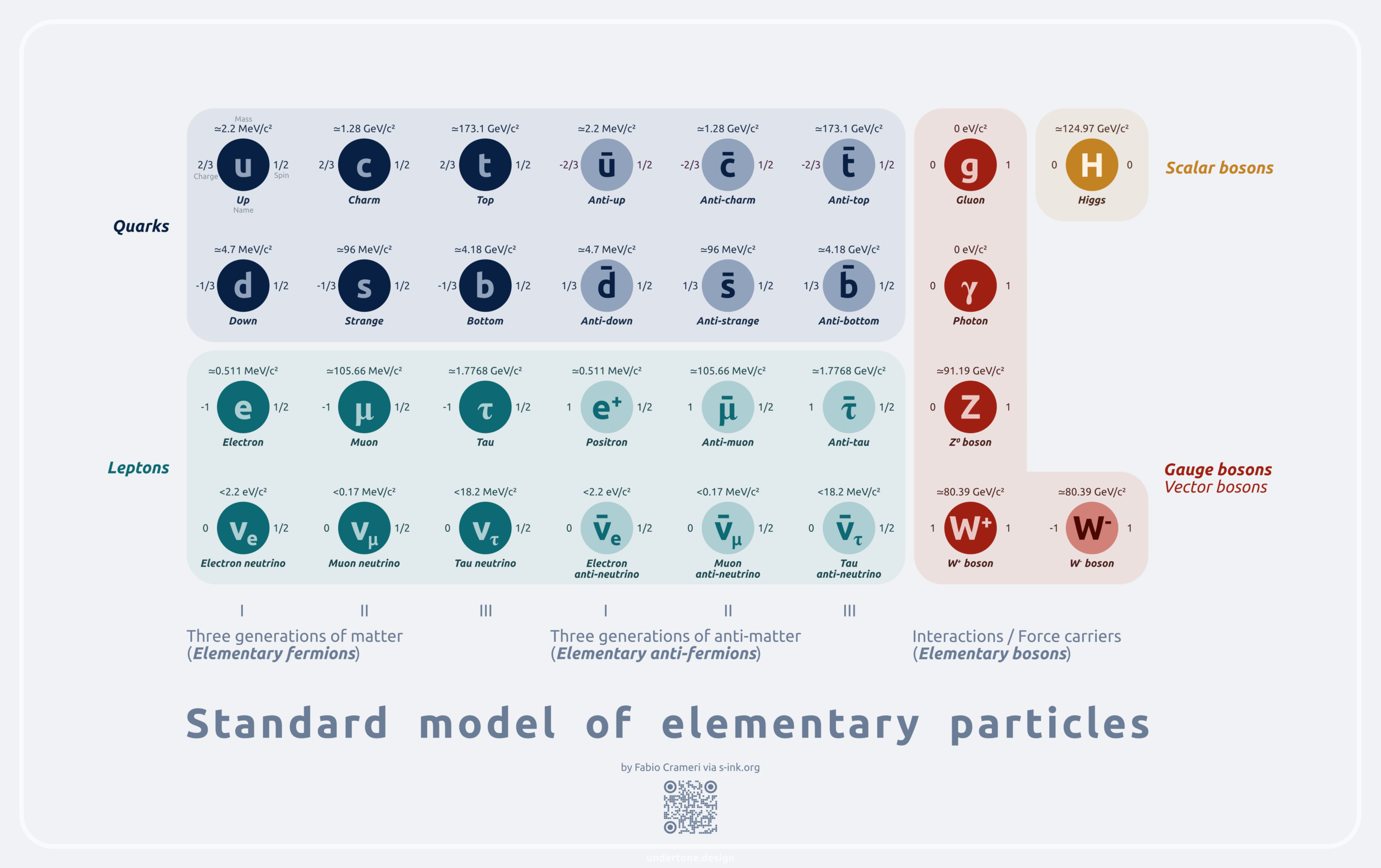Have you ever pondered the intricate tapestry of the universe and the fundamental constituents that compose it? The notion of elementary particles often tantalizes the imagination. These enigmatic entities serve as the foundational elements of matter, yet they elude straightforward comprehension. So, what are elementary particles made of? To navigate this compelling inquiry, we delve into both the historical and modern paradigms that demarcate our understanding of these infinitesimal constituents.
Elementary particles can be broadly categorized into two main classes: fermions and bosons. Fermions constitute the matter—the tangible substance present in our universe—whereas bosons are integral to mediating forces. The classification establishes a dichotomy that aids in conceptualizing the nature and role of these particles in the grand schema of physics. To fully grasp what elementary particles are composed of, one must first understand their fundamental characteristics.
Fermions are further subdivided into quarks and leptons. Quarks, the building blocks of protons and neutrons, are bound together by the strong nuclear force, an interaction mediated by gluons—particles that belong to the boson category. Leptons, which include electrons, muons, and neutrinos, serve a different function, contributing to the atom’s structure and involvement in various fundamental forces. On the other hand, when we consider bosons, they include a plethora of particles responsible for force transmission, such as the photon (which mediates electromagnetic force) and the W and Z bosons (which are key in weak interactions).
The Standard Model of particle physics composes a framework that coherently encapsulates our understanding of elementary particles and their interactions. Within this paradigm, the concept of mass is pivotal; however, the origins of mass have been a subject of extensive inquiry. The Higgs boson, a particle theorized and ultimately discovered in 2012, elucidates this query. The Higgs field permeates space; elementary particles gain mass through their interactions with this field. Essentially, the dynamics of the Higgs field contribute to what makes these particles what they are—not merely their identity but an essential aspect of their existence.
But let us pose an intriguing question: If elementary particles are not made of anything more fundamental, how do we even define their essence? This query intertwines with the deeper philosophical implications of particle physics. In an abstract sense, one could argue that elementary particles are mere excitations or manifestations of underlying symmetries and fields. This interpretation leads to a rather profound contemplation: the fabric of reality may be less about tangible substance and more about the relationships and interactions between these fundamental entities.
In investigating the nature of elementary particles, one cannot overlook the role of quantum mechanics. The Heisenberg Uncertainty Principle posits that certain pairs of physical properties—such as position and momentum—cannot be simultaneously known with arbitrary precision. This indeterminacy challenges our conception of reality, implying that elementary particles exist in a state of probability rather than definitive attributes. Thus, attempting to discern what these particles are “made of” may be less about their material composition and more about their probabilistic characteristics and interactions.
As we traverse the realm of particle interactions, the electromagnetic force becomes particularly noteworthy, primarily attributed to the exchange of photons between charged particles. This exchange underscores a compelling interdependency: particles are not isolated entities; instead, they are part of a larger interaction network. These forces are vital in determining the structure and stability of atomic and subatomic systems. When considering the decay modes of particles, one recognizes that even when particles seemingly disintegrate into other particles, the elements of the original particle are not destroyed; rather, they are transformed or reconfigured.
Moreover, the exploration of elementary particles enters ominous fields when we consider dark matter and dark energy. These entities constitute a significant portion of the universe’s total mass-energy content, yet remain elusive to direct observation. The particles involved in these phenomena are, as of yet, unfathomably mysterious, hinting at realms beyond the Standard Model. Some hypothesize that these could comprise yet undiscovered elementary particles that challenge and refine our current understanding of particle physics.
In light of these complexities, the quest to uncover what elementary particles are made of transcends mere physical inquiry. It beckons a multidisciplinary approach that intertwines theoretical physics, philosophy, and even metaphysics. At the most fundamental level, elementary particles signify not only the components of matter but also embody existential inquiries into the nature of reality itself.
In summary, to inquire into the composition of elementary particles is to embark upon a profound journey into the core of physical existence. These particles are not merely the building blocks of matter but represent a tapestry woven from interactions, forces, and the symmetries of nature. As our scientific endeavors evolve, we may find that understanding the very essence of elementary particles could illuminate not only the particle landscape but the architecture of the cosmos in its entirety, prompting us to reevaluate our place in this grand universe.












